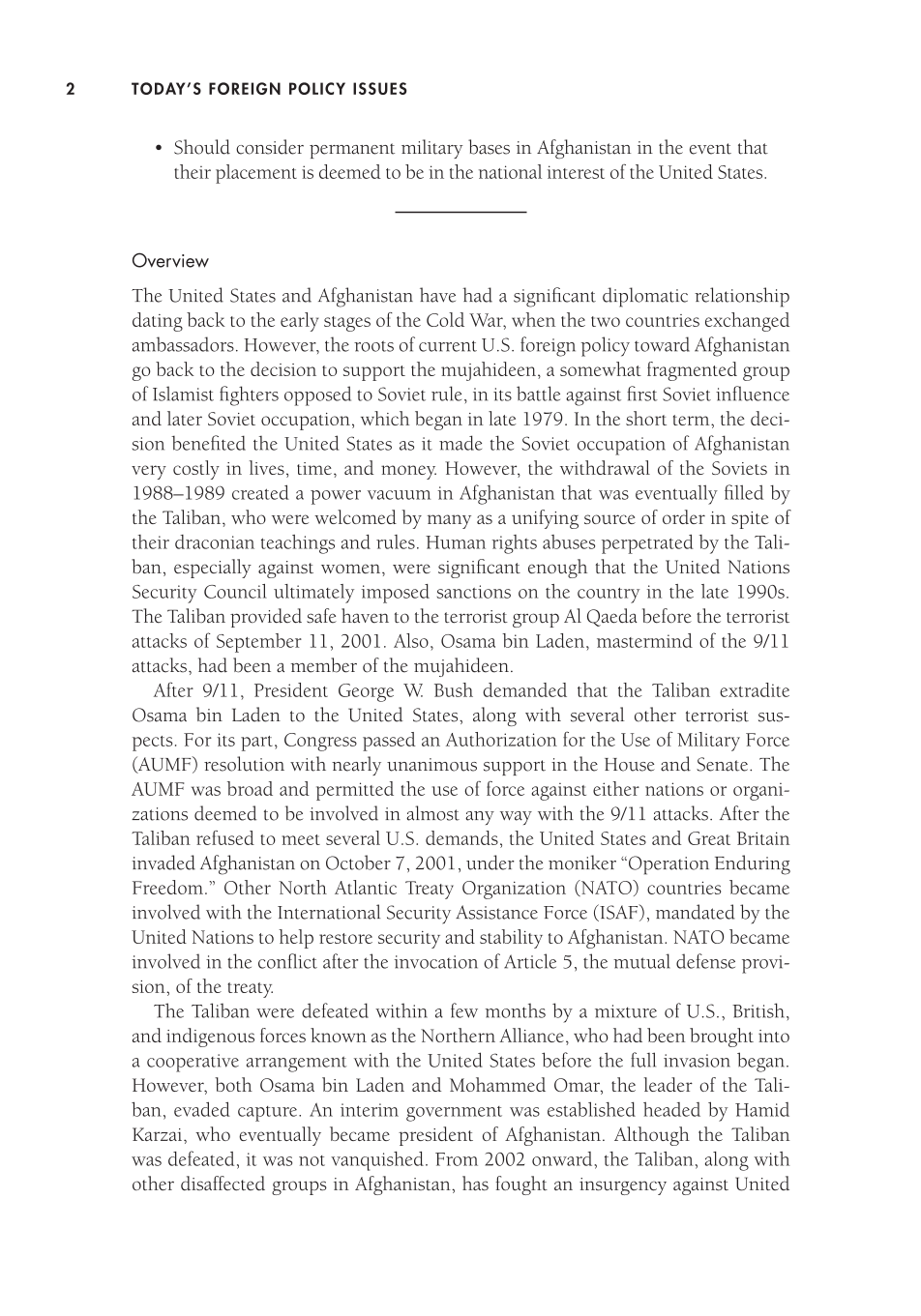TODAY’S FOREIGN POLICY ISSUES 2
• Should consider permanent military bases in Afghanistan in the event that
their placement is deemed to be in the national interest of the United States.
Overview
The United States and Afghanistan have had a significant diplomatic relationship
dating back to the early stages of the Cold War, when the two countries exchanged
ambassadors. However, the roots of current U.S. foreign policy toward Afghanistan
go back to the decision to support the mujahideen, a somewhat fragmented group
of Islamist fighters opposed to Soviet rule, in its battle against first Soviet influence
and later Soviet occupation, which began in late 1979. In the short term, the deci-
sion benefited the United States as it made the Soviet occupation of Afghanistan
very costly in lives, time, and money. However, the withdrawal of the Soviets in
1988–1989 created a power vacuum in Afghanistan that was eventually filled by
the Taliban, who were welcomed by many as a unifying source of order in spite of
their draconian teachings and rules. Human rights abuses perpetrated by the Tali-
ban, especially against women, were significant enough that the United Nations
Security Council ultimately imposed sanctions on the country in the late 1990s.
The Taliban provided safe haven to the terrorist group Al Qaeda before the terrorist
attacks of September 11, 2001. Also, Osama bin Laden, mastermind of the 9/11
attacks, had been a member of the mujahideen.
After 9/11, President George W. Bush demanded that the Taliban extradite
Osama bin Laden to the United States, along with several other terrorist sus-
pects. For its part, Congress passed an Authorization for the Use of Military Force
(AUMF) resolution with nearly unanimous support in the House and Senate. The
AUMF was broad and permitted the use of force against either nations or organi-
zations deemed to be involved in almost any way with the 9/11 attacks. After the
Taliban refused to meet several U.S. demands, the United States and Great Britain
invaded Afghanistan on October 7, 2001, under the moniker “Operation Enduring
Freedom.” Other North Atlantic Treaty Organization (NATO) countries became
involved with the International Security Assistance Force (ISAF), mandated by the
United Nations to help restore security and stability to Afghanistan. NATO became
involved in the conflict after the invocation of Article 5, the mutual defense provi-
sion, of the treaty.
The Taliban were defeated within a few months by a mixture of U.S., British,
and indigenous forces known as the Northern Alliance, who had been brought into
a cooperative arrangement with the United States before the full invasion began.
However, both Osama bin Laden and Mohammed Omar, the leader of the Tali-
ban, evaded capture. An interim government was established headed by Hamid
Karzai, who eventually became president of Afghanistan. Although the Taliban
was defeated, it was not vanquished. From 2002 onward, the Taliban, along with
other disaffected groups in Afghanistan, has fought an insurgency against United




























































































































































































































































































































































































































